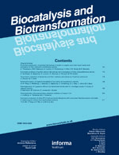
BIOCATALYSIS AND BIOTRANSFORMATION
Scope & Guideline
Unveiling the Synergy of Chemistry and Biology
Introduction
Aims and Scopes
- Biocatalysis and Enzyme Engineering:
Research on the optimization and engineering of enzymes for enhanced activity, stability, and specificity in various biochemical reactions. - Microbial Biotransformations:
Studies focusing on the use of microorganisms for the transformation of organic compounds, including the development of methods for enzyme production and characterization. - Environmental Applications:
Research dedicated to the use of biocatalysts in environmental remediation, including the degradation of pollutants and bioremediation strategies. - Industrial Biotechnology:
Application of biocatalysis in industrial processes, including production of biofuels, biochemicals, and food products, emphasizing sustainable practices. - Novel Biocatalysts:
Discovery and characterization of new biocatalysts from diverse sources, including metagenomics and synthetic biology approaches.
Trending and Emerging
- Sustainable Bioprocessing:
A growing emphasis on sustainable methods for bioprocessing, including the use of renewable resources and eco-friendly solvents, is evident in recent publications. - Nanobiocatalysts:
Research on the development and application of nanomaterials for enzyme immobilization and biocatalysis is gaining traction, highlighting innovations in enhancing enzyme performance. - Metagenomics and Bioprospecting:
There is an increasing focus on metagenomics to discover novel enzymes and biocatalysts from unexplored environmental sources, reflecting the trend towards utilizing diverse biological resources. - Deep Eutectic Solvents (DES) in Biocatalysis:
The use of deep eutectic solvents as reaction media for biocatalytic processes is emerging as a significant trend, indicating a shift towards greener solvents in biotransformation. - Enzyme Cascades and Multistep Reactions:
A notable trend towards the development of enzyme cascades and multistep reactions for complex molecule synthesis is emerging, reflecting the demand for efficient biocatalytic processes.
Declining or Waning
- Traditional Chemical Methods:
There is a noticeable shift away from traditional chemical synthesis methods in favor of biocatalytic approaches, leading to a reduced volume of papers focusing on purely chemical methodologies. - Basic Enzyme Characterization:
While enzyme characterization remains important, studies that lack a practical application or innovative approach are becoming less frequent, as the journal increasingly prioritizes applied research. - Single Enzyme Studies:
Research centered solely on individual enzymes without exploring their application in broader biocatalytic processes or systems is declining, as integrated approaches gain more attention.
Similar Journals

Biotechnology for Biofuels and Bioproducts
Exploring Innovative Pathways for Sustainable EnergyBiotechnology for Biofuels and Bioproducts is a premier international journal published by BMC, situated in the United Kingdom, focusing on the critical intersection of biotechnology and sustainable energy solutions. Established as an Open Access platform in 2022, this journal aims to disseminate high-quality research that advances our understanding of biofuels, bioproducts, and their applications within environmental sustainability. With its commendable Q2 ranking in multiple relevant categories including Applied Microbiology and Biotechnology and Renewable Energy, this journal serves as a vital resource for researchers, industry professionals, and students seeking to explore innovative biotechnological approaches to address global energy challenges. The journal emphasizes interdisciplinary research, fostering collaboration among scientists in biotechnology, environmental science, and policy-making. As it continues to publish impactful findings until 2024, Biotechnology for Biofuels and Bioproducts remains essential for those dedicated to advancing sustainable methodologies in energy and resource management.

BIOTECHNOLOGY LETTERS
Transforming Ideas into Impactful Biotechnological SolutionsBIOTECHNOLOGY LETTERS is a prestigious peer-reviewed journal that has been at the forefront of biotechnology research since its inception in 1979. Published by Springer, this esteemed journal serves as a vital platform for disseminating cutting-edge research in the fields of applied microbiology, bioengineering, and biotechnology, with a focus on innovative methodologies and technologies. With an impact factor reflecting its critical contribution to the discipline, BIOTECHNOLOGY LETTERS resides in the Q2 and Q3 tiers of various scientific categories, placing it among the notable journals in the biotechnological landscape. Although it offers traditional access options and does not feature open access, the journal embraces a global readership, encouraging submissions from researchers, professionals, and students eager to explore the dynamic advancements in biotechnology. Situated in the Netherlands, it continues to shape the future of the field through relevant, impactful research that addresses contemporary challenges and opportunities in medicine and beyond.
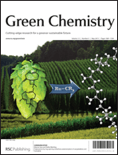
GREEN CHEMISTRY
Leading the charge in sustainable chemistry and pollution studies.GREEN CHEMISTRY, published by the prestigious Royal Society of Chemistry, stands at the forefront of the rapidly evolving field of sustainable chemistry. Since its inception in 1999, this esteemed journal has consistently made significant contributions to environmental chemistry and pollution studies, achieving an impressive Q1 ranking in both categories as of 2023. With a distinguished presence in Scopus rankings, positioned at #10 in Environmental Science _ Pollution and #12 in Environmental Science _ Environmental Chemistry, GREEN CHEMISTRY is recognized for its commitment to advancing research that prioritizes eco-friendly practices and innovative methodologies. The journal serves as a vital platform for researchers and professionals dedicated to promoting sustainability and reducing environmental impact through chemistry, making it an essential resource for anyone interested in the intersection of chemistry and environmental sciences. Although it does not currently offer open access, its significant impact factor highlights its relevance and authority in the field. The journal is located at Thomas Graham House, Science Park, Milton Road, Cambridge, UK, and continues to engage a global audience of scientists and students passionate about green innovations.
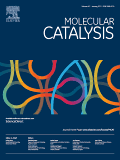
Molecular Catalysis
Connecting Researchers to the Future of CatalysisMolecular Catalysis, published by Elsevier in Netherlands, is a premier academic journal that explores the cutting-edge domain of catalytic science. With an impressive impact factor and classified in the top quartiles (Q2) in various fields such as Catalysis, Physical and Theoretical Chemistry, and Process Chemistry and Technology, this journal stands as a significant resource for researchers and professionals committed to advancing the understanding of catalysis processes. Since its inception in 2017, it has been pivotal in publishing high-quality, peer-reviewed research that addresses crucial challenges and innovations in molecular catalysis. The journal is fully Open Access, allowing unrestricted access to its articles, thus fostering a wider dissemination of knowledge. Recognized for its rigorous editorial standards, it features works that push the boundaries of current scientific understanding, making it an essential platform for students and academics alike to share and grow in their expertise.
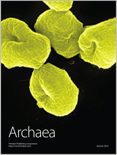
ARCHAEA-AN INTERNATIONAL MICROBIOLOGICAL JOURNAL
Bridging Gaps in Microbial UnderstandingARCHAEA - AN INTERNATIONAL MICROBIOLOGICAL JOURNAL, published by Hindawi Ltd, stands as a pivotal platform for scholars in the realm of microbiology and related fields. With an ISSN of 1472-3646 and an E-ISSN of 1472-3654, this Open Access journal has been committed to disseminating high-quality research since its inception in 2002. Based in the United States, and now operating globally from its London office, ARCHAEA features a diverse scope encompassing ecology, evolution, behavior, and systematics. Recognized for its scholarly contributions, it holds noteworthy quartile rankings as of 2023, including Q2 in Ecology and Q3 in Microbiology, highlighting its impact in these scientific communities. The journal's Scopus rankings further emphasize its prestige, reflecting a commitment to advancing knowledge in microbiology. By providing open access to its publications, ARCHAEA ensures that vital research is readily available to researchers, professionals, and students worldwide, fostering collaboration and innovation in the study of archaeal life and its ecological significance.
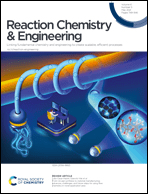
Reaction Chemistry & Engineering
Fostering Collaboration for Chemical Engineering ExcellenceReaction Chemistry & Engineering is an esteemed journal published by the Royal Society of Chemistry, dedicated to advancing the field of chemical engineering. With a focus on pivotal topics including catalysis, process technology, and fluid flow, this journal serves as a critical platform for researchers and professionals seeking to disseminate innovative findings and methodologies. As of 2023, it boasts impressive impact factors, ranking Q2 in Catalysis and consistently appearing in the Q1 categories for several related fields, thus recognizing its influence and relevance in the scientific community. With Scopus rankings placing it among the top 30 journals in multiple chemical engineering categories, Reaction Chemistry & Engineering encourages open dialogue and collaboration among scientists aiming to overcome contemporary challenges in chemical processes. This journal is vital for anyone involved in the development and application of chemical engineering, providing essential insights and fostering progress in this dynamic discipline. Explore the latest research and contribute to future innovations by engaging with the cutting-edge work presented in Reaction Chemistry & Engineering.

APPLIED BIOCHEMISTRY AND BIOTECHNOLOGY
Pioneering Sustainable Solutions through BiotechnologyApplied Biochemistry and Biotechnology is a leading journal published by Springer, dedicated to advancing research in the interdisciplinary fields of biochemistry, biotechnology, and applied microbiology. Established in 1981, this peer-reviewed journal covers a wide range of topics that encompass innovative techniques, methodologies, and applications of biochemistry and biotechnology in medicine, environmental engineering, and molecular biology. With a Q2 ranking in several categories and an increasing impact factor, the journal demonstrates significant influence and credibility within the scientific community. While traditionally subscription-based, the journal offers avenues for open access through selective agreements, making high-quality research accessible to a broader audience. Researchers, professionals, and students alike will find Applied Biochemistry and Biotechnology to be an invaluable resource for the latest developments and applications in biochemistry and its related fields, aiding in the quest for sustainable solutions and novel biotechnological advancements.

Biochemical Engineering Journal
Innovating Tomorrow's Bioengineering SolutionsBiochemical Engineering Journal, published by Elsevier, is an esteemed platform dedicated to advancing research in the fields of bioengineering, biomedical engineering, biotechnology, and environmental engineering. This journal, with ISSN 1369-703X and E-ISSN 1873-295X, has carved a niche for itself since its inception in 1998, boasting a commendable Q2 category ranking in multiple pertinent disciplines as of 2023. The journal's strong impact factor reflects its influence, with Scopus rankings placing it in the top quartiles across relevant fields including Environmental Engineering and Bioengineering. With a focus on both fundamental and applied research, it aims to inform and inspire academia and industry alike by disseminating high-quality studies, reviews, and innovative methodologies. Researchers and professionals are encouraged to explore this reputable journal to remain at the forefront of emerging trends and technologies in biochemical engineering.

TOPICS IN CATALYSIS
Transforming Ideas into Catalytic SolutionsTOPICS IN CATALYSIS is a renowned journal published by SPRINGER/PLENUM PUBLISHERS, dedicated to advancing the field of catalysis and its applications in chemistry and chemical engineering. With its ISSN 1022-5528 and E-ISSN 1572-9028, this journal has been a critical resource since its inception in 1994, encompassing a wide range of research topics and recent advancements within the realm of catalysis, including both fundamental studies and practical applications. As of 2023, it holds a prestigious Q3 ranking in Catalysis and a Q2 ranking in miscellaneous chemistry, reflecting its impact and relevance in the academic community. With a Scopus rank of #128 in General Chemistry and #38 in Catalysis, TOPICS IN CATALYSIS is positioned to be a key contributor to the ongoing dialogue in these fields, fostering innovation and collaboration. While not an open-access journal, it provides institutional access options, ensuring that the latest findings and methodologies are available to researchers, professionals, and students worldwide. This journal is essential for those looking to stay at the forefront of catalysis research and its transformative potential in science and industry.
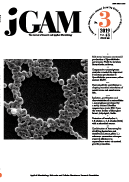
JOURNAL OF GENERAL AND APPLIED MICROBIOLOGY
Bridging theory and application in microbial science.JOURNAL OF GENERAL AND APPLIED MICROBIOLOGY, published by the MICROBIOL RES FOUNDATION, is a vital resource in the fields of applied microbiology and biotechnology, as well as in diverse medical applications, serving an academic community dedicated to advancing microbial science. Established in 1955, this journal has a rich history of disseminating innovative research and insights into the intricate world of microorganisms. With an ISSN of 0022-1260 and an E-ISSN of 1349-8037, the journal maintains high scholarly standards and robustness, reflected in its 2023 Scopus rankings placing it in the Q3 and Q4 quartiles within its categories. While primarily based in Japan, the journal engages a global audience, offering valuable contributions that inform both theoretical perspectives and practical applications in microbiology. Despite being a non-open-access publication, it provides pivotal research findings essential for academics, professionals, and students alike, fostering a deeper understanding of microbial impact on health and the environment.